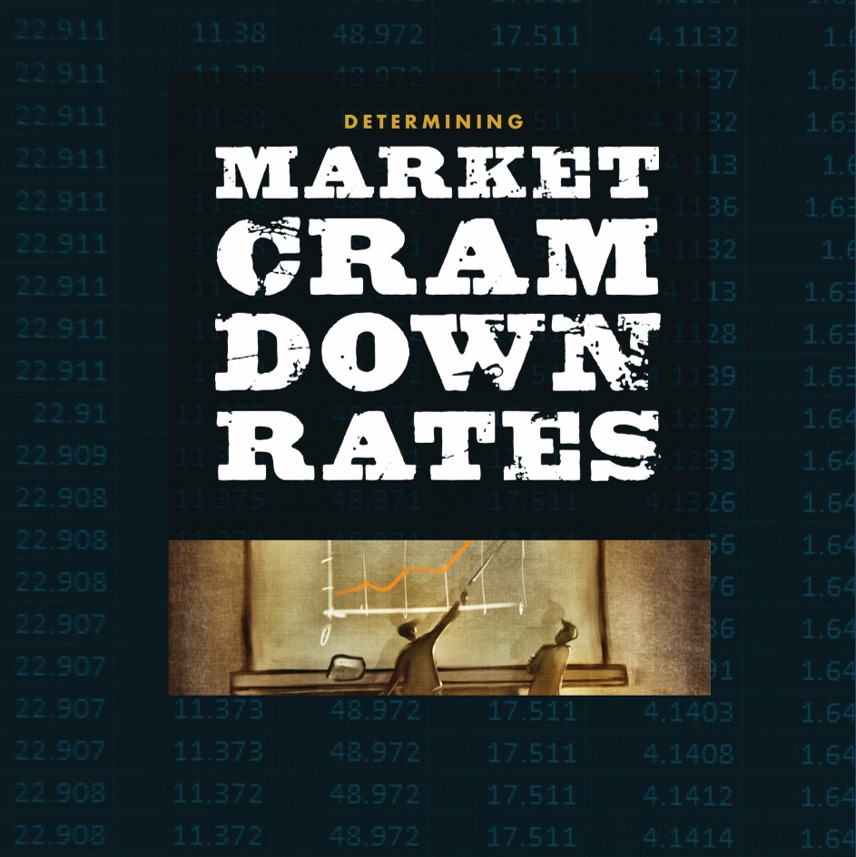Determining Market Cram Down Rates
By Andrew Malec, Ph.D., Partner and Managing Director
In re MPM Silicones, LLC, the United States Court of Appeals (“Court”) reversed the decisions of the lower courts and concluded that the prevailing market rate for comparable debt should be used if there is an efficient market for such debt, and that the formula approach should be used only if no efficient market exists. The Court further noted that disregarding available efficient market rates would be a major departure from long-standing precedent dictating that the best way to determine value is exposure to an efficient market. This two-step approach will most likely shift litigation efforts to focus on whether an efficient market exists.
Momentum Performance Materials, Inc. (“MPM”), a leading producer of silicone, faced serious financial problems after it took on significant new debt obligations beginning in the mid-2000s. Following these debt issuances, MPM was substantially overleveraged, filed a petition under Chapter 11, and ultimately submitted a reorganization plan (“Plan”) to the bankruptcy court. Several elements of that Plan were at issue on these appeals. Notably, the Senior Note holders opposed the Plan on the ground that the replacement notes they received did not provide for the make-whole premium and carried a largely risk-free interest rate that failed to comply with the U.S. Bankruptcy Code (“Code”) because it was well below ascertainable market rates for similar debt obligations. Therefore, the interest rate was not fair and equitable because it failed to give them the present value of their claim. The bankruptcy court held that the Plan was fair to the Senior Note holders because the 2012 indentures did not require payment of the make-whole premium in the “bankruptcy context” and because the interest rate on the proposed replacement notes, even though well below a “market rate,” was determined by a formula that complied with the Code’s cramdown provision. On appeal, the district court essentially agreed with the bankruptcy court.
The Court noted that the bankruptcy court viewed itself as “largely governed by the principles enunciated by the plurality opinion in Till v. SCS Credit Corp., 541 U.S. 465 (2004),” when it concluded that the proper rate was what the plurality in Till referred to as the “formula” or “prime-plus” rate to compensate the lender for the loan. Although Till involved a Chapter 13 petition, the plurality suggested that this method might be applicable to Chapter 11 cramdown provisions. Interestingly, the plurality went on to state that the approach best applied in the Chapter 13 context may not be suited to Chapter 11 noting that in Chapter 13 cramdowns “there is no free market of willing cramdown lenders; the same is not true in the Chapter 11 context as numerous lenders advertise financing for Chapter 11 debtors-inpossession. Thus, when picking a cramdown rate in a Chapter 11 case, it might make sense to ask what rate an efficient market would produce.”
The Senior Note holders presented expert testimony that MPM went to the market seeking lenders to provide exit financing to cover the cash-out payment for their notes. Those lenders quoted MPM rates of interest ranging from 5 to 6+% (compared to the 4.1% and 4.85% rates allowed by the bankruptcy court). The Court further noted that when dealing with a sub-prime loan in the Chapter 13 context, “value” can be elusive because the market is not necessarily efficient and the borrower is typically unsophisticated. However, the court noted in MPM that an efficient market may exist that generates an interest rate that is apparently acceptable to sophisticated parties dealing at arm’s-length. The Court further concluded that a market rate is preferable to a formula improvised by a court noting that “the goal of the cramdown rate is to put the creditor in the same economic position that it would have been had it received the value of its allowed claim immediately.” The Court concluded that the lower courts erred in categorically dismissing the probative value of market rates of interest and remanded the case so that the bankruptcy court can ascertain if an efficient market rate exists and, if so, apply that rate instead of the formula rate.
The question at hand for the courts is whether an efficient market exists in the first place. The Efficient Markets Hypothesis (“EMH”) is one of the cornerstones of modern finance theory. It implies that, on average, securities trade at prices equal to their intrinsic values. That is, the supply and demand for debt securities are always in equilibrium and that it is impossible for an investor to consistently “beat the market.” If interest rates charged by lenders are too high, then rational market participants will push interest rates downward. Conversely, if the interest rates are too low, rational market participants will push interest rates higher to properly compensate for the risk undertaken on the investment. As such, the market interest rate represents the required rate of return required by a lender to compensate for the investment risk undertaken by loaning monies to a Chapter 11 debtor in-possession.
For financial experts, the burden will be to prove that there exists a sophisticated market of lenders for debtor-in-possession financing, ascertain a comparable market rate for the debtor-in-possession that takes into consideration the riskiness of the investment, and concisely convey these findings to the court. These indices will include lenders who provide above average loan to values or in some cases have yields that mix a debt/equity component for overleveraged transactions. Experts need to be cognizant that litigation efforts will focus on proving whether an efficient market exists since this will imply that either a market or formula rate will be used in determining the cramdown rate.


